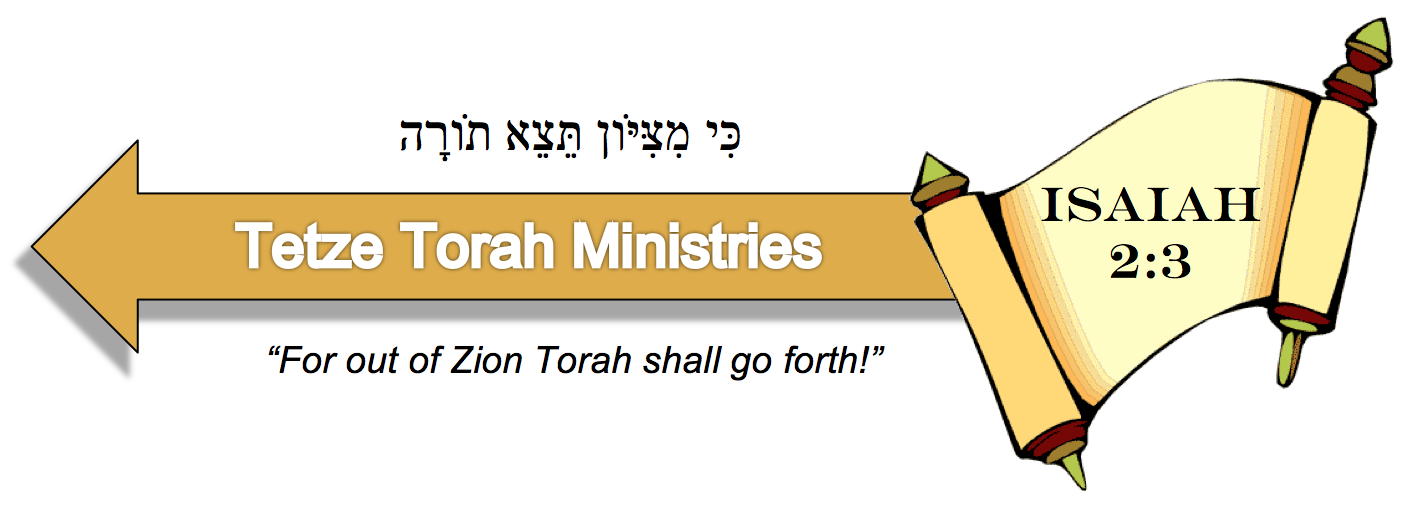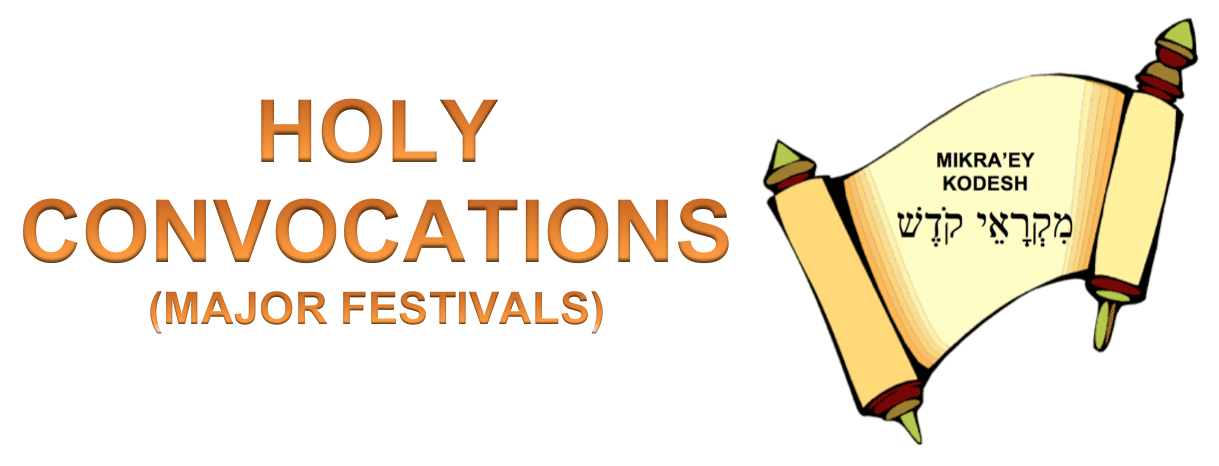hamatzah - unleavened bread
view/download pdf
mp3
*Updated: April 11, 2006
“ADONAI said to Moshe, “Tell the people of Isra’el: ‘The designated times of ADONAI which you are to proclaim as holy convocations are my designated times.” (Leviticus 23:1, 2)
חַג הַמַּצֹּות Chag HaMatzot – Feast of Unleavened Bread
“On the fifteenth day of the same month is the festival of matzah; for seven days you are to eat matzah.” (Leviticus 23:6)
The festival known as HaMatzah follows immediately after Pesach. The fourteenth of the Jewish month Nisan is Pesach; the fifteenth is HaMatzah. As the Torah so clearly instructed the offspring of Avraham, all bread eaten during this observance was to be matzah. So what is matzah? Matzah is the name of the bread eaten by our ancestors as they hastened to leave Egypt during the Passover deliverance. This bread is known by its familiar flat shape, owing to the fact that no time was allowed to let it rise like ordinary bread (read Sh’mot 12:34). Borrowing a few notes from my Pesach commentary I explain:
The Encyclopedia Judaica explains that biblical yeast was not altogether different than the yeast of today. After all, yeast is a natural product, not something that modern science has created. Yeast consists of any of a group of minute, one-celled ascomycetous fungi, which produce alcoholic fermentation in saccharine fluids. As such, they grow very quickly in a liquid containing sugar. This speaks of HaShem's design not the scientology of synthetics. An informative article on leavening agents can be viewed at this link: http://homecooking.about.com/food/homecooking/library/weekly/aa072197.htm?iam=mt&terms=%2Bleaven. The passages in question speak to one of the 5 grains that could possibly “leaven” in the presence of water and time: wheat, barley, oats, rye, and spelt."
The mitzvah primarily has to do with the baked goods. But the mitzvah does say to remove all leaven from your houses (Ex. 12:19-20). In Deut. 16:3, 4 there are two Hebrew words used to describe “biblical leaven”: chametz #em'x=dough from one of the 5 grains that has been allowed to “ferment” and create yeast, from which bread may be baked, and s’or r{a.f=the standalone ingredient usually defined as “yeast.” I believe that a sincere approach includes removing anything which will defile the conscience, which for biblical purists might only include the “grain” products, but for the ultra sensitive might also include the standalone product we now know as yeast."
Those who know their way around the kitchen understand that it is the yeast in the bread dough that causes it to rise; this was the missing ingredient in our ancestor’s matzah; it is the very ingredient commanded to be left out during this feast to this very day. Take time to read the additional passage in Sh’mot 12:14-20 and find out the biblical application of this ingredient.
Why leaven? Leaven is a word picture representing sin. From the day that the people left Egypt they were on a divine intercept course with the Holy One, which would eventually culminate in the glorious giving of his Teaching (Torah) at Mount Sinai. The former events (Passover and Unleavened bread) signified the putting off of the sin that separated them from fellowshipping with their soon to be husband; the latter event (the giving of the Torah) signified the new Spirit-led relationship which the people would learn to walk in. It is timely therefore, that the second step in putting off of sin should occur AFTER deliverance (Passover), but BEFORE the spiritual wedding ceremony (Pentecost). Let’s apply these principles to our everyday lives.
While it is true that when a person comes to accept Yeshua the Messiah, HaShem accepts them as they are (i.e., with sin included), it is equally true that once the deliverance from sin takes place (i.e., our salvation), we should naturally begin the continuing process of “searching for and removing the leaven of sin” from our lives. This leads to a genuine understanding of the subsequent indwelling and filling of the Ruach HaKodesh (the marriage) which should accompany our newborn freedom in Messiah. Why would the expulsion of sin produce this spiritual effect? Because the Torah teaches us in 1 Corinthians chapter 5,
“Get rid of the old hametz [leaven], so that you can be a new batch of dough, because in reality you are unleavened bread. For our Pesach lamb, the Messiah, has been sacrificed. So let us celebrate the Seder not with leftover hametz, the hametz of wickedness and evil, but with the matzah of purity and truth.” (vv. 7-8)
Here we learn that hametz (leaven) was interpreted by Sha’ul as a type of sin also. The leaven of sin, like its culinary counterpart, has the capacity to work its way into the complete dough of our lives, expanding and rising, until the whole “loaf” is permeated with sin. This is why, with the guidance of the Ruach within us, we need to remove all of the leaven from ourselves. Will this result in a sinless life? No. Yet, our efforts will surely be rewarded in the form of a renewed and strengthened walk with our LORD. In other words, as long as we have these earthen vessels, our desire should be to flee from sin, until we finally reach that blessed time when our LORD Yeshua will return in Power and Glory to cleanse us completely! Sin has a way of growing and growing until it results in a damaged relationship with our Heavenly Abba. In his mercy and undeserved grace, he lovingly guides and allows us to perform our own “spring cleaning” before it is too late for us to turn back from the destructive road that sin leads down. In other words, his gentle leading and divine foresight saves us from ourselves. “Baruch HaShem!”
The wonderful reality that is ours is that the above-mentioned passage directly associates us with “unleavened bread.” This is our new identity in Yeshua HaMashiach! This is our true identity! His sacrifice redeemed us from the slavery of the sin of “spiritual Egypt,” and changed our very constitution! We are actually a completely new batch of dough! Sha’ul is therefore instructing us to start living as if this reality has been internalized already—for indeed it should be by now! His further instructions in this passage act as an explicit teaching for the Messianic Community of the first century not to neglect the divine invitation to observe the Passover, complete with HaMatzah. After all, is not the verse saying, “So let us celebrate the Seder….”? These instructions can be applied to the Body of believers today, without falling into the trappings of legalism and the like. I hope that each believer reading this article will at some time in his or her spiritual walk desire to attend a Passover Seder. I encourage each one of you to expand your understanding of these biblical feast days.
Finally, with the feast of HaMatzah comes the understanding that only the Messiah Yeshua is the sinless Lamb of God. In my opening statement to the commentary on Pesach I stated that Yeshua literally fulfilled each of the first four feasts of Leviticus chapter 23. How did he fulfill HaMatzah?
Aside from celebrating this feast with his Torah-observant family year after year, his body—the True Bread from heaven, was without leaven in any sense of the word. His sinless life represents the heavenly matzah offered on HaShem’s Passover plate. During our earthly Seders, we partake of the middle piece of matzah, also known by its Greek name “afikomen.” It is this middle piece that is hidden and redeemed during the ceremony. Messianics understand this symbolism to represent Yeshua’s “unleavened body” being placed in the grave (hidden) for three days and nights, only to be redeemed (rise again) by his resurrection power from on high. We believers so aptly capture this reality in our various “communion” services. Let us celebrate the festival of HaMatzah with joy!
Personal examination. Take time to conduct a spiritual inspection of your walk with HaShem. Allow this Spirit-led introspection to reveal where the leaven is hidden. You just may be surprised to find out where the leaven in your life is hanging out! I know that I always am. In order to make this time period more effective, we need to use the most effective tool for this particular job!
The Torah.
Our sin nature makes us prone to disobedience. The Torah of HaShem serves to remind us of how short we fall, when we try to measure up to God's righteousness. While it is true that no one alive could have ever kept all of the commandments of God, it is also true that HaShem never expected anyone to be able to! The Torah doesn’t demand perfection, else, there would be no need of the bulk of instructions outlined in the book of Leviticus, concerning sacrifices for sin. Moreover, if we could ever achieve a state of total "sinlessness,” we would have no need of a Savior.
What the Torah expects from its followers is genuine trusting faithfulness to the giver of the Torah, who is the Holy One of Isra'el! Today, that implies placing one's complete trust in his Only, Unique Son Yeshua, the True Unleavened Bread!
“Chag HaMatzah Sah-meach!”
(Happy Festival of Unleavened bread)
For further study, read: Ex. 19:10, 14; 28:39-41; Lev. 8:30; 11:44; 20:7; Josh. 24:14; 2 Chron. 30:15; 35:1, 6; John 17:17, 19; Acts 20:32; 22:16; 1 Cor. 1:2; 5:7-8; 6:11; 10:1-2; Eph. 5:26; 6:24; Phil. 1:10; Heb. 10:10, 14; 1 Pet. 2:2
Torah Ariel ben-Lyman HaNaviy yeshua613@hotmail.com



